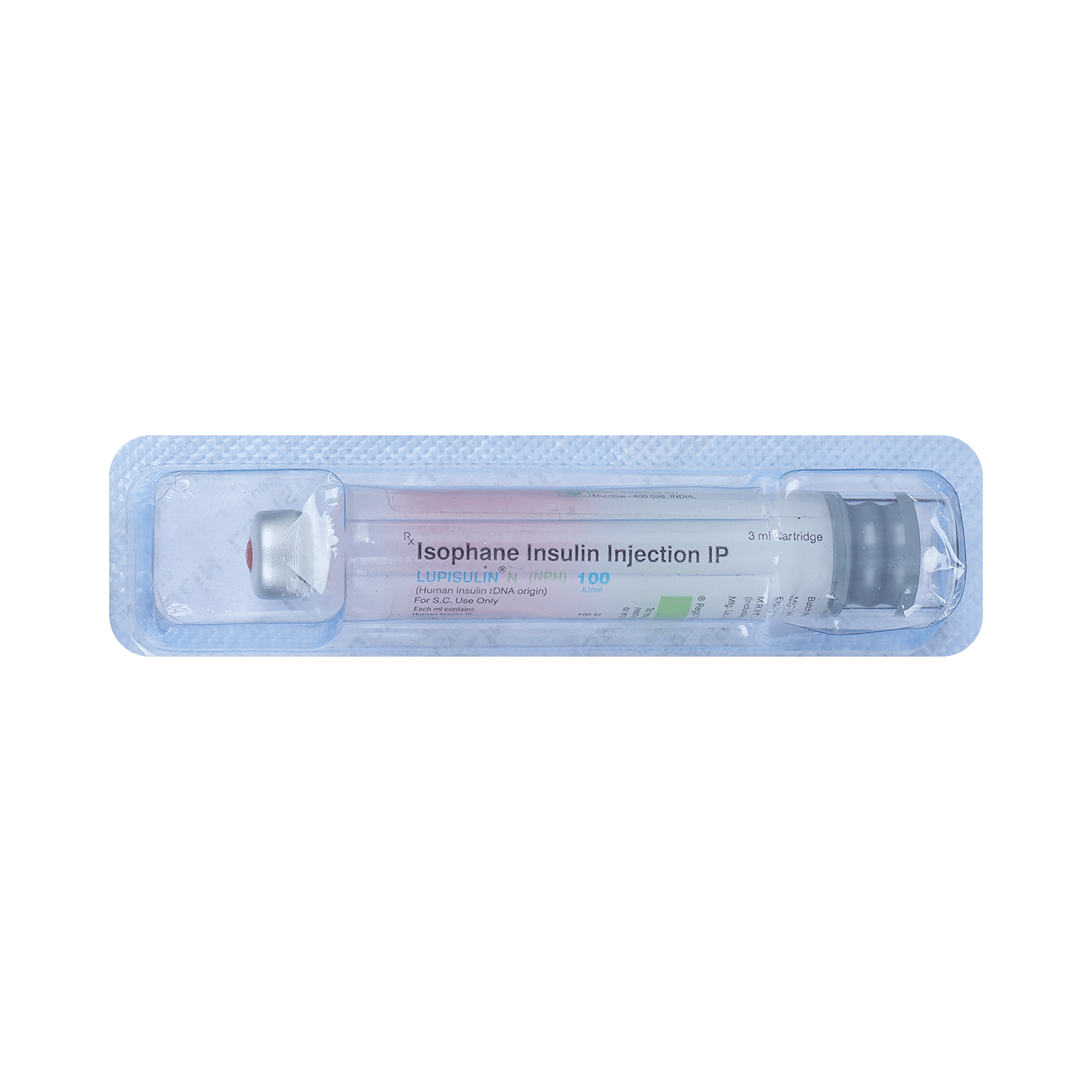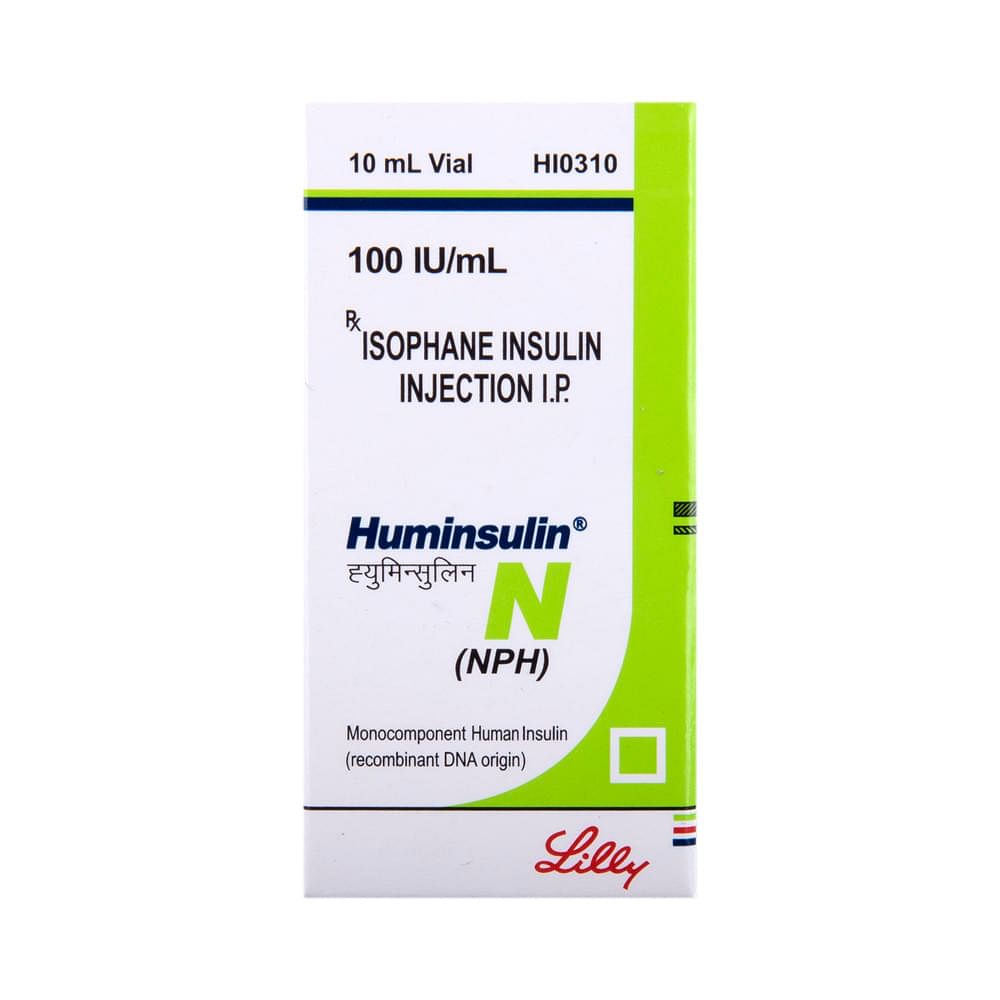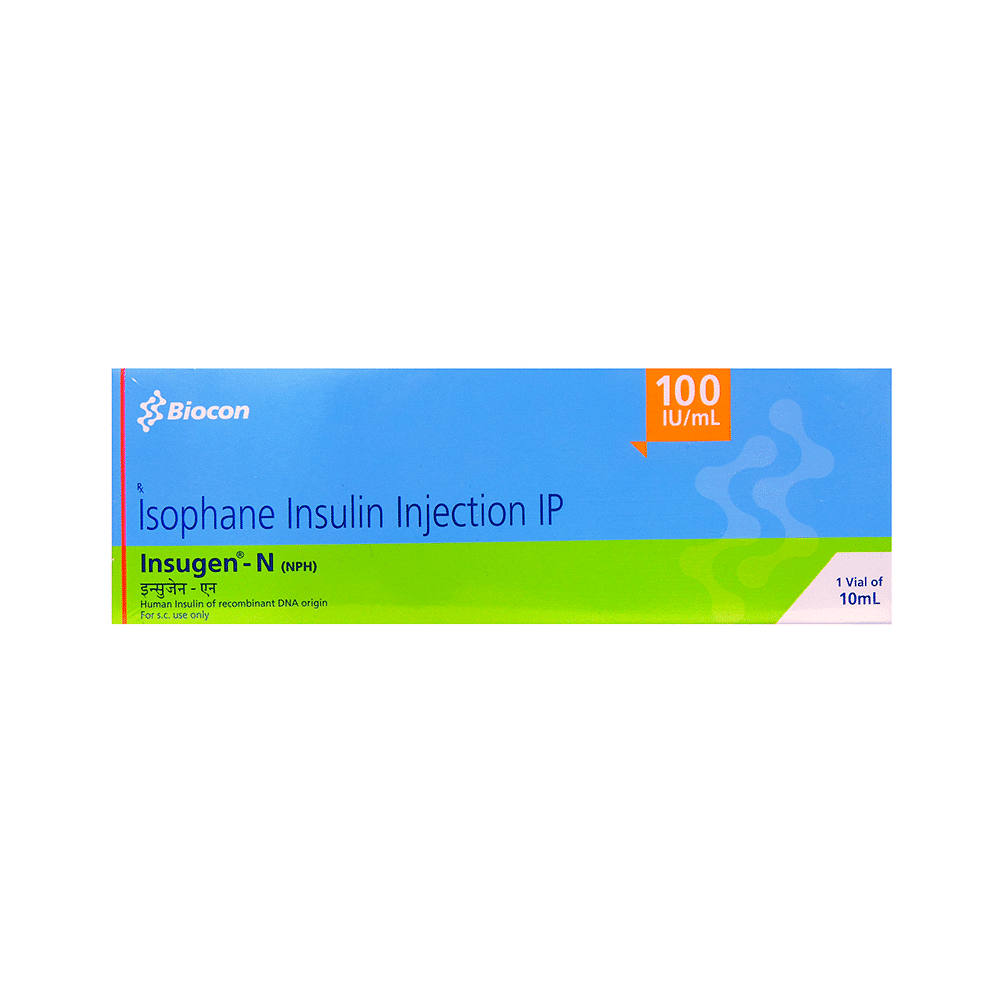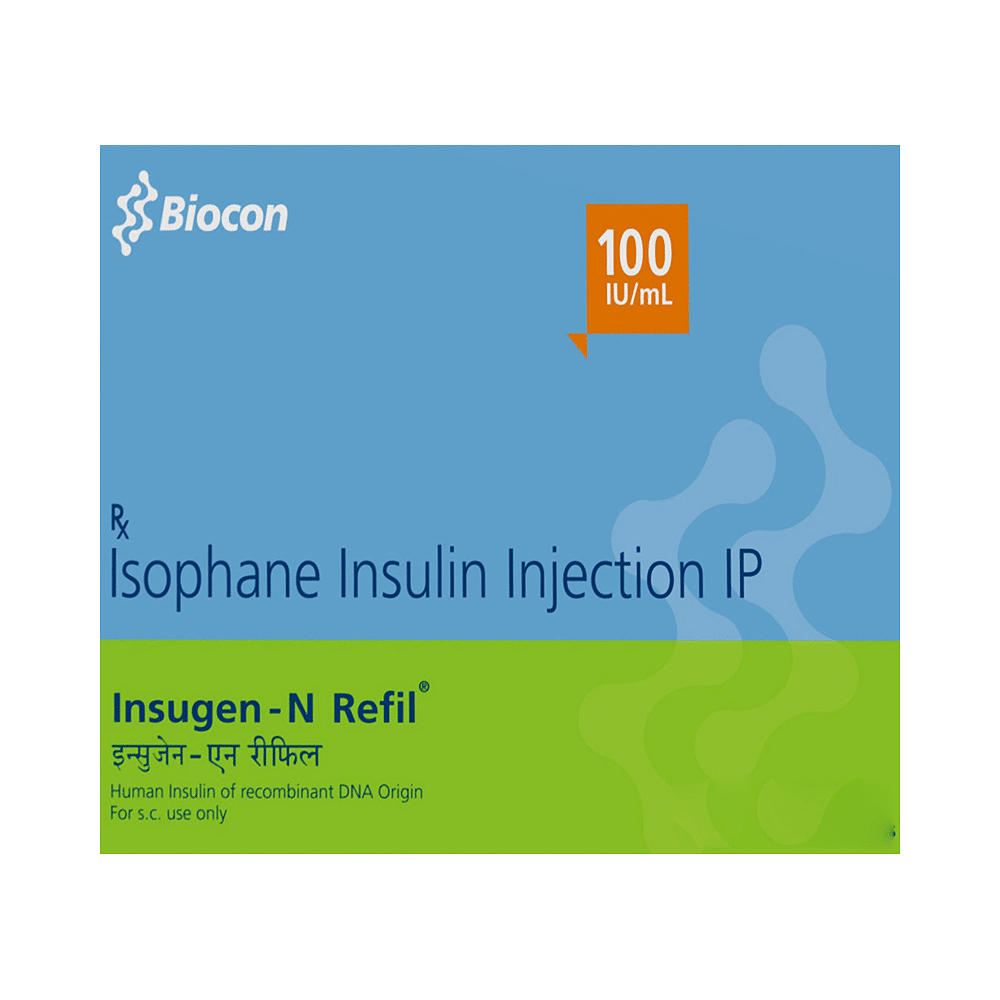


Lupisulin N 100IU/ml Injection
Manufacturer
Lupin Ltd
Salt Composition
Insulin Isophane (100IU)
Key Information
Short Description
Lupisulin N 100IU/ml Injection is used to improve blood sugar control in adults and children with type 1 and type 2 diabetes mellitus. It is an intermediate-acting type of insulin that helps to lower blood sugar levels and reduce the chances of developing serious complications of diabetes.
Dosage Form
Injection
Introduction
Lupisulin N 100IU/ml Injection is often prescribed along with short-acting insulin or other oral diabetes medicines. Your doctor or nurse will teach you the correct way of injecting it under the skin. Don’t stop taking it unless your doctor tells you to. It is only part of a treatment program that should also include a healthy diet, regular exercise, and weight reduction as advised by your doctor. Check your blood sugar levels regularly, keep track of your results, and share them with your doctor. This is very important to work out the correct dose of the medicine for you.
Directions for Use
Your doctor or nurse will give you this medicine. Kindly do not self-administer.
Safety Information
Side Effects
Hypoglycemia (low blood sugar level) Reactions at the injection site like redness or swelling Lipodystrophy (skin thickening or pits at the injection site) Edema (swelling over the whole body due to fluid retention) Weight gain
Alcohol Warning
It is unsafe to consume alcohol with Lupisulin N 100IU/ml Injection.
Breastfeeding Warning
Lupisulin N 100IU/ml Injection is safe to use during breastfeeding. Human studies suggest that the drug does not pass into the breastmilk in a significant amount and is not harmful to the baby.
Pregnancy Warning
Lupisulin N 100IU/ml Injection is generally considered safe to use during pregnancy. Animal studies have shown low or no adverse effects to the developing baby; however, there are limited human studies.
Interacting Medicines
Benazepril Captopril Enalapril Fosinopril
How it works
Lupisulin N 100IU/ml Injection is an intermediate-acting insulin that starts working in 1-2 hours after injection. It works similar to the insulin that is produced by the body. Insulin facilitates reuptake of sugar in muscle and fat cells and also suppresses the production of sugar in the liver. This helps to lower the blood sugar levels in diabetes mellitus.
Quick Tips
Hypoglycemia (low blood sugar level) is a common side effect. Hence regular monitoring of blood sugar levels is required while taking this medicine. Injection below the skin of the abdomen results in faster absorption than other injection sites. Injection sites must be rotated to prevent hard lumps from developing at one site. Opened vials/cartridge are good at room temperature for up to 4 weeks while unopened vials must be placed in the refrigerator (2°C–8°C).
Related Medicines

Huminsulin N 100IU/ml Injection

Insugen-N 100IU/ml Injection

Insugen-N 100IU/ml Refil Injection

Recosulin N 100IU Injection

Lupisulin N 100IU/ml Injection

Wosulin-N 100IU/ml Injection
Frequently asked questions
How does biphasic isophane insulin work?
Biphasic isophane insulin is a recombinant human insulin analogue (genetically modified insulin grown in a laboratory and similar to human insulin). It's an intermediate acting insulin preparation. Biphasic insulin works by replacing the body's own insulin production and helps move sugar from the bloodstream into cells, where it's used for energy generation. It also prevents the liver from producing excessive sugar. Intermediate-acting insulin preparations start working within one to two hours after injection and reach peak activity lasting up to seven hours after which their effect begins to fade; the overall duration of action is 18 to 24 hours.
What is Lupisulin N 100IU/ml Injection? How is it made?
Lupisulin N 100IU/ml Injection is a man-made version of human insulin produced using biotechnology called recombinant DNA technology. It's sold as a sterile, clear, colorless, and aqueous solution that contains insulin aspart along with other components like glycerin, phenol, metacresol, zinc, sodium chloride, etc.
Can Lupisulin N 100IU/ml Injection cause hypoglycemia? How do I prevent it?
Yes. The most common side effect of Lupisulin N 100IU/ml Injection is hypoglycemia (low blood sugar). This is more likely to happen if you skip meals, drink alcohol, over-exercise, or take other antidiabetic medications alongside the injection. To prevent this, eat regular meals, maintain consistent meal timing and quantities, and have glucose snacks when needed, particularly after exercising vigorously. Monitor your blood sugar regularly.
What are the other side effects of Lupisulin N 100IU/ml Injection? How to prevent them?
The most common side effect is injection site reactions like redness, itching, pain, and swelling. These usually resolve on their own. Rarely, it can also cause lipodystrophy (abnormal fat tissue changes) which includes lipohypertrophy (thickening of adipose tissue) and lipoatrophy (thinning of adipose tissue). Rotating insulin injection sites or infusion sites within the same area will help to reduce this risk. Use a new site every week.
How should Lupisulin N 100IU/ml Injection be used?
Lupisulin N 100IU/ml Injection is injected subcutaneously (under the skin). Your doctor will show you the appropriate site for injection. Avoid repeating the same spot every time and try rotating injection sites, such as abdomen, buttocks, upper legs, or upper arms. Never inject it into a muscle or vein. Use the same area of your body each week, ensuring movement within that area to maintain consistency in insulin absorption.
Is Lupisulin N 100IU/ml Injection given as an injection into a vein (intravenous)?
Yes. Sometimes, during cases of diabetic ketoacidosis or severe hyperglycemia, Lupisulin N 100IU/ml Injection may be administered intravenously. This is done under continuous blood sugar monitoring in a hospital setting.
Is Lupisulin N 100IU/ml Injection safe to use during pregnancy?
Yes, Lupisulin N 100IU/ml Injection is generally safe for use during pregnancy if prescribed by a doctor. However, it's important to inform your doctor before using the medication if you are pregnant or planning to become pregnant or breastfeeding. Your doctor may need to adjust the dosage and monitor your blood sugar levels regularly.
When does the dosage of Lupisulin N 100IU/ml Injection need to be changed?
You should consult your doctor if you experience significant weight changes (gain or loss), increased stress, illness, dietary changes such as missed meals, or take alcohol. Your doctor may change your dose and recommend frequent blood sugar monitoring.


